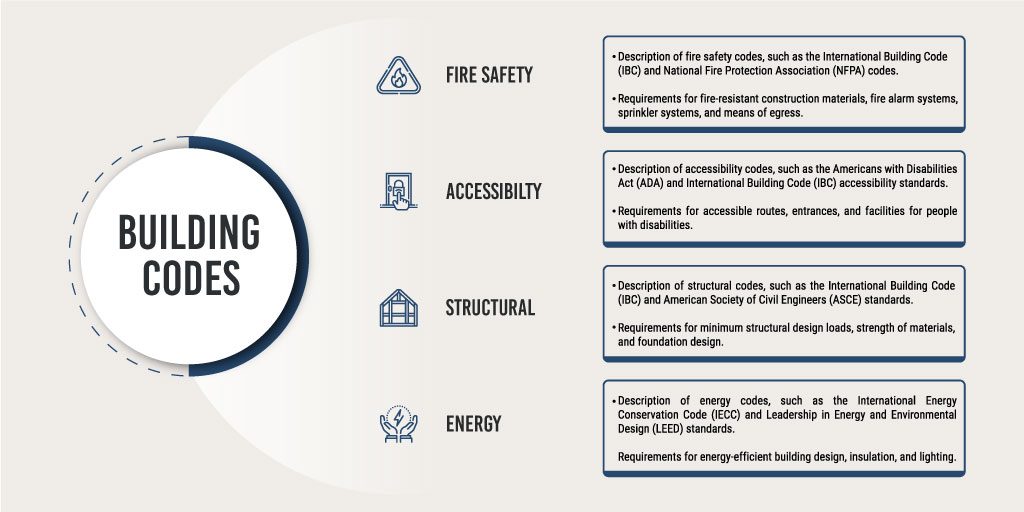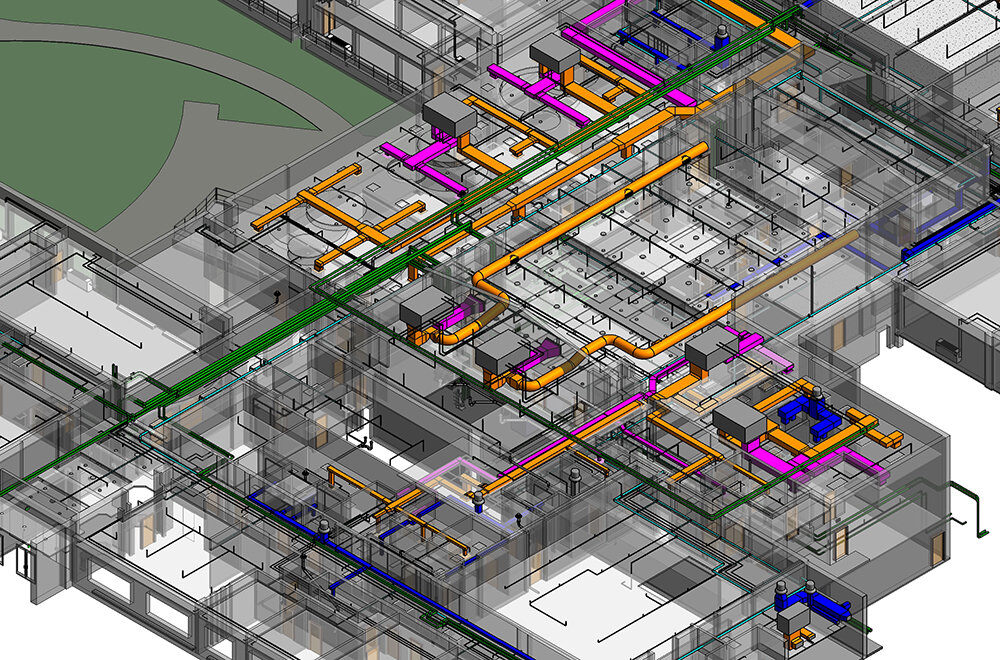
Imagine constructing a massive high-rise without a rulebook: no fire safety regulations, ventilation standards, or electrical guidelines. Chaos, right? That is why building codes exist. For a MEP engineer, these codes are not just regulatory documents but the foundation of everything done in MEP works in construction.
India’s rapidly expanding urban landscape and innovative city initiatives have made it more crucial than ever for professionals in the MEP industry to know their codes. Whether you are a beginner taking your first MEP course or a seasoned pro managing large-scale MEP projects, these codes are your best mates on the job.
This blog will explain these codes, why they matter, and which ones you must know.
What Are Building Codes and Why Are They Important for MEP Engineers?
Before we discuss standards, let's rewind a bit. First, what is MEP in construction?
MEP stands for Mechanical, Electrical, and Plumbing, the essential systems that breathe life into any building. If architecture is a building's body, MEP infrastructure is its nervous system. These codes guide every MEP engineer, ensuring that MEP design meets legal, functional, and safety requirements. For everyone involved, from a contractor juggling multiple projects to a MEP technician working with MEP drawings, being up to code means fewer mistakes, quicker approvals, and consistent quality. Mastering these standards significantly boosts your chances of landing premium MEP engineer jobs or collaborating with leading BIM services providers.
Why MEP Building Codes Matter:
- Ensure safety, efficiency, and compliance in MEP works in construction
- Reduce design errors, rework, and project delays
- Help secure quicker regulatory approvals
- Provide clear guidelines for installation and maintenance
- Increase employability in top-tier MEP jobs and BIM MEP services firms
- Build client trust and improve overall project quality
How Building Codes Impact MEP Design and Execution

Regarding MEP works in construction, building codes are more than just documents; design constraints shape your workflow. For instance, you are using Revit MEP, a widely popular MEP software. The software might offer you endless design freedom, but your design is useless unless you embed code compliance into your workflows. They influence everything from the MEP drawings you submit to the construction teams to the long-term maintainability of the building.
In large-scale commercial projects, BIM MEP services often use BIM software to coordinate architecture, structure, and MEP systems. Building codes help prevent clashes and ensure seamless integration. Simply put, they are the universal language that unites stakeholders- engineers, architects, contractors, and authorities- on the same page.
Top Building Codes Every MEP Engineer Should Be Familiar With
So, which building codes should a MEP engineer in India know? Let us break it down.
1. National Building Code of India (NBC)
The mother of all codes, the National Building Code of India, is a comprehensive guideline covering all aspects of construction. It includes fire safety, lighting and ventilation, building materials, plumbing services, and electrical installations. If you are working in India, this code is non-negotiable.
In particular, volume 2 of the NBC focuses on Building Services—pure gold for anyone involved in MEP projects. It covers ventilation standards, electrical load design, energy efficiency, water supply, and waste disposal.
Getting a national building code certificate is a great way to demonstrate your expertise and credibility. It tells your clients and employers that you know your stuff and are committed to safe, standardised construction.
2. Energy Conservation Building Code (ECBC)
The ECBC is issued by the Bureau of Energy Efficiency (BEE) and is focused on energy efficiency. It sets building performance standards regarding envelope, lighting, HVAC systems, and renewable energy usage. For a MEP engineer, the ECBC is vital for designing systems that align with India’s sustainability goals.
ECBC compliance is a must, especially when working on green buildings or LEED-certified structures. The code also encourages efficient technologies, many of which can be seamlessly modelled using Revit MEP software.
3. Indian Standards (IS Codes)
The Bureau of Indian Standards (BIS) provides over 19,000 IS codes, many directly relevant to MEP professionals. Here are a few key ones:
- IS 732 – Code of Practice for Electrical Wiring Installations
- IS 1239 – Steel Tubes for Structural Purposes
- IS 1742 – Guidelines for Fire Protection
- IS 2065 – Earthings
- IS 3043 – Code of Practice for Earthing
These standards help refine your MEP design and clarify specific materials and techniques, especially when working with contractors or an MEP technician on-site.
4. Uniform Plumbing Code – India (UPC-I)
Developed by the Indian Plumbing Association, UPC-I is a comprehensive set of plumbing regulations that complement the NBC. It is your go-to water supply and sanitation guide, from fixture units to stormwater drainage.
This code is indispensable if plumbing is part of your job profile or you coordinate closely with plumbing consultants.
5. Fire and Life Safety Code
Part of the NBC but often treated as a standalone guide, the Fire and Life Safety Code ensures proper planning of fire escapes, smoke extraction systems, sprinkler placements, and fire alarm configurations. As MEP is central to life safety systems, this code is paramount.
Whether you are laying out fire alarms in a hospital or smoke detectors in a shopping mall, the Fire Code ensures you do it right.
How to Stay Updated with Changing MEP Code Requirements
Here is the thing: building codes are not carved in stone. They evolve. So, how do you stay current?
1. Read and Re-read
Make it a habit to review the National Building Code of India and other relevant codes annually. Updates are published on the BIS and BEE websites. Set Google Alerts if you must!
2. Enrol in a Specialised MEP Course
Modern MEP courses integrate code compliance with tools like Revit MEP and other MEP software. These improve your technical skills and train you to apply code in real-world scenarios.
3. Work with BIM MEP Services
If you are part of a firm offering BIM MEP services, you will naturally be exposed to cutting-edge practices. These firms often work on high-end MEP infrastructure projects that demand strict code adherence.
4. Network and Learn
Join industry associations, attend webinars, and participate in workshops. Platforms like CII, ISHRAE, and IPA frequently host code-related training sessions.
Conclusion
Being an MEP engineer today means more than understanding HVAC, electrical, or plumbing. It is about creating systems that are functional, compliant, safe, and future-ready. Mastering building codes is not optional; it is essential. Whether you are drawing up plans in Revit MEP, installing equipment on-site, or managing entire MEP projects, building codes ensure your work is legal, sustainable, and reliable. From the national building code of India to IS standards and energy efficiency norms, these regulations form the backbone of quality construction.
So, if you aim to scale new heights in the MEP industry, make building codes your best friends. Keep learning, stay compliant, and design with confidence, because every brilliant MEP design starts with a solid understanding of the rules that govern it. Therefore, enrolling for a course that offers holistic learning opportunities, such as the BIM Professional Course for MEP Engineers by Novatr.
Visit our Resources Page to learn about the latest developments in the built environment.
Was this content helpful to you



.jpeg)



